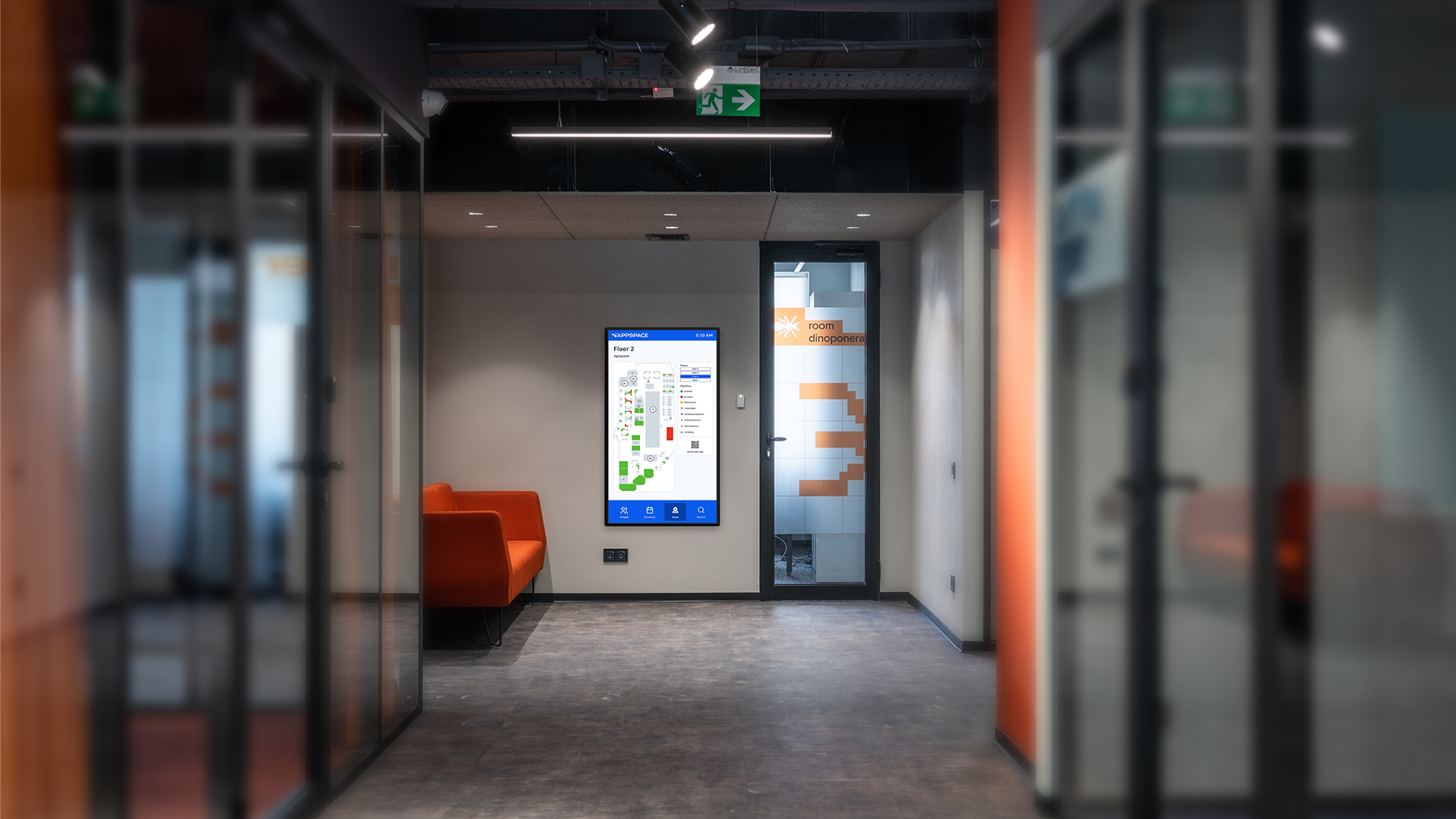What is wayfinding signage used for?
Sprawling campuses, complex floor plans, confusing signage. You get the picture. Welcome to the world of so many large organizations, where finding your way around can be a real challenge.
The good news is there’s a solution: digital wayfinding. And our latest research report reveals it’s one of the top 10 ways organizations can improve the in-office experience, according to respondents.
First off: What is wayfinding?
Put simply, wayfinding is the art and science of guiding people through physical spaces. It encompasses a few things, like:
- Maps (obviously)
- Strategically placed signage
- And other visual cues to help people understand where they are – and how to get where they need to be.
With remote and hybrid work models here to stay, wayfinding has become a must-have workplace solution that helps employees navigate office spaces when they visit.
What is wayfinding signage and how can it help?
Wayfinding signage is basically any type of sign that gives directions. But it goes beyond that. It can help zap the stress associated with being late or not knowing where you’re going and improve the overall employee and visitor experience in an environment that might otherwise be a confusing maze. Let’s dive into the benefits:
- Clear directions that say “you’ve got this”: Digital wayfinding’s main mission is to offer clear and simple directions to people navigating a space that’s unfamiliar. From arrows and symbols to text instructions, signage makes sure you can get around with confidence.
- Safety first. Always: Well-placed wayfinding signage plays a big role in creating a safe environment. In emergency situations, for example, signage can guide you to the nearest exit and help you find your way quickly and easily.
- Taming the complexity beast: Airports, hospitals, shopping malls – these sprawling spaces can be overwhelming. But wayfinding signage breaks down these environments into bite-sized pieces, so you have a clear path to your destination.
- Inclusion is the name of the game: By incorporating braille, tactile features, and audible cues, you can make sure everyone can navigate spaces with ease and independence.
- Boosting experience, one sign at a time: A well-designed wayfinding system can boost the overall workplace experience. By reducing stress and anxiety associated with not knowing where you’re going, signage contributes to a positive impression of the environment.
- The space whisperer: Efficient use of space is a top priority for large organizations. When you integrate bookable spaces (like rooms and desks) with Wayfinding, employees have an easy way to get around and find a space to work.
- Smooth sailing, no bumps: Broadcast critical and real-time updates on maintenance issues, room availability, and service requests. This ensures that facilities run smoothly, repairs are timely, and employees can enjoy a well-maintained work environment.
- Change? No problem: Wayfinding solutions can help during transition times, like office reconfigurations, expansions, or relocations – creating a smooth navigation experience for employees when things are in flux. With dynamic digital maps and updated signage, employees can handle change without missing a beat.
- Time is money: We all know time is precious. Thanks to clear signage, digital maps, and wayfinding kiosks, there’s no time wasted figuring out where to go. That means more time to focus on core responsibilities and tasks.
- Say yes to collaboration: Shared spaces, meeting rooms, collaborative work areas. With wayfinding you’ve got easy access to more opportunities for collaboration, teamwork, and innovative ideas.
See how a large pharmaceutical company is using wayfinding to add the wow factor to its HQ.
Different types of wayfinding signage
To effectively guide people, wayfinding signage incorporates various components. Let’s take a closer look:
- Directional signs: Think: arrows, symbols, and concise text to guide you along the right path. These signs are like your personal GPS, showing you the way to your desired destination.
- Identification signs: Think of these signs as name tags, helping you identify specific areas or landmarks. In a hospital, for example, identification signs might display floor numbers or department names, ensuring patients and visitors get where they need to be, stress free.
- Informational signs: “Psst! Did you know the cafeteria closes at 2 p.m.?” Consider these signs your friendly tour guide, dishing out relevant details like operating hours, facility policies, or important notices.
- Maps and floor plans: Maps are a critical component of a wayfinding system. They give you a bird’s-eye view of the whole environment, showing key landmarks, routes, and points of interest. By using maps along with directional signage, it’s easier to navigate complex spaces with confidence.
Want to know more?
Find out how Appspace can help with wayfinding solutions that get you where you need to be.
Learn more about Appspace Wayfinding.


